During the carbon prin class, held by da Damiano Bianca, I discussed a lot with him about the problem of separating the black and color channels of an image, showing some results obtained matching grey scale with K canal in pigmented VDB prints.
Damiano told me about an unknown and fascinating world, the one of the typographic print before computers came into our lives, when there was a precise professional figure whose task was to prepare different channels negatives, someone who only did that job, someone with the adequate knowledge to work, and all of that using only analogue materials. Therefore I was convinced by the importance of black generating curve, once it was exposed.
Color theory says that mixing equal amounts of cyan, magenta and yellow creates the perfect black. Actually though, because of pigments impurity, in the real world those three colors creates an unpleasant brown. This inconvenience is obviated, when printing in quadri-chromic, adding a fourth layer of black pigments that neutralizes shadows and gives deepness and prominence to the print.
Here comes the black generation curve. In fact the black parts of prints can contain a certain percentage of “black” obtained mixed cyan, magenta and yellow and pure black. Choosing a black generation curve settles on how pigment has to be put inside shadows, middle tones and lights, and how black obtain by the fundamental canal matching.
Photoshop offers this option selecting “Custom CMYK” as working space in “Edit -> Color Settings”. It is possible to choose between different black generation curves. Personally, I use the “Medium” value, while Ron Reeder, in Making a Color Separation of his pigment and platinum print suggests “Maximum”. In the light of what I learned from Damiano, I understood that Ron Reeder choice could be better, so I decided to analyze the influence of black generation on color separation, comparing medium and maximum curve.
Comparison of the black generation curves
The conversion RGB to CMYK already has differences. The image is less saturated using the maximum curve, as you can notice looking at the foulard the women is wearing and the purple cloth behind the naked foot. The wall and the path lost their faintly dominant that they had using the medium curve too. Even if differences are little and colors will be highly deformed by the successive conversions, the fact that using the maximum CMYK curve is less saturated is very important. In fact the big problem in pigmented VDB prints is the saturation augment obtained in high lights, reason for which I started using a grey scale instead of K channels.
Once eliminated the black channel, differences are evident. It only takes a little of every color to give the dominants and the color only appears in the most saturated part of the image, such as the skirt and the foulard. The case of the medium curve instead uses a lot of color to create shadows, which seems browns anyway. The fact that the image has less color should deform the color itself and make dominants appear.
Even if this is not the aim of the study, en passant you can notice that the first case will use less ink. This allows a little saving on expensive printer ink to which, and that is even most interesting, we have to add a probable advantage on picture conservation. It could not be so real for VDB prints, but I’ll bet that a tirage where black is generated by a platinum or palladium image will be more resistant than one where shadows are generated mixing the fugitive pigments of an ink jet printer.
Once the image is reconverted in RGB, the image obtained with a maximum curve keeps on being less saturated than the one that had a medium curve applied. Apart from that, in both cases the passage from CMYK to RGB brought a general augment of the saturation and the appearance of dominants. The use of a maximum black generation curve instead of a medium, even if ameliorate the situation, doesn’t solve the problems related to the conversion from a color space to another. The most unpleasant is the considerable augment of magenta in skin tones, which is for now the biggest problem of this technique.
Talking about the K channel, the one obtained with the maximum curve, it shows lots more black than the generated with medium curve. You may notice that black is on the entire image, while the medium curve completely lacks of lights, and that’s the reason why I tried to generate the VDB negative starting from a conversion in grey scale from the starting file, to be used instead of the K channel. It means that the maximum curve will obtain an image, composing the real CMYK channels, that best near the starting one if compared to a medium curve and a grey scale conversion instead of K channel. Using the grey scale conversion will give the same problems that black and white photography without colored filters give, which are image contrast and hues separation that can change depending on colors and their light.
Conclusions about the black generation curve
Maximum black generation curve, used in RGB to CMYK conversion, is the best possible choice to obtain channels for color separation. Even if over-saturation problem is not solved and chromatic dominants incur in CMYK to RGB conversion, maximum curve files are slightly less saturated and contain less color. This means a certain economical saving and allows prints that have a better conservation than the medium curve has.
In any case, the maximum curve biggest advantage is a complete K channel, better than the medium curve result, empty in lights, and better than a grey scale image conversion, which comports even important hues deformations.


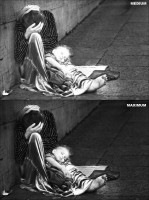
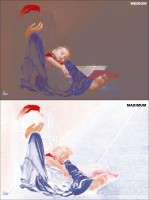
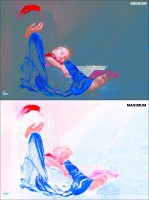
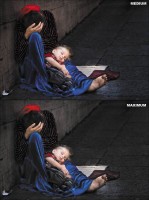
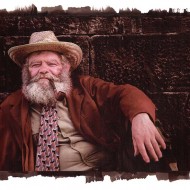
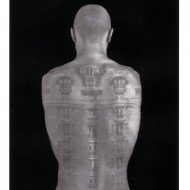
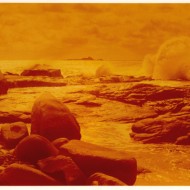
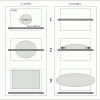
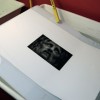





























You can also subscribe to this post comments RSS feed.